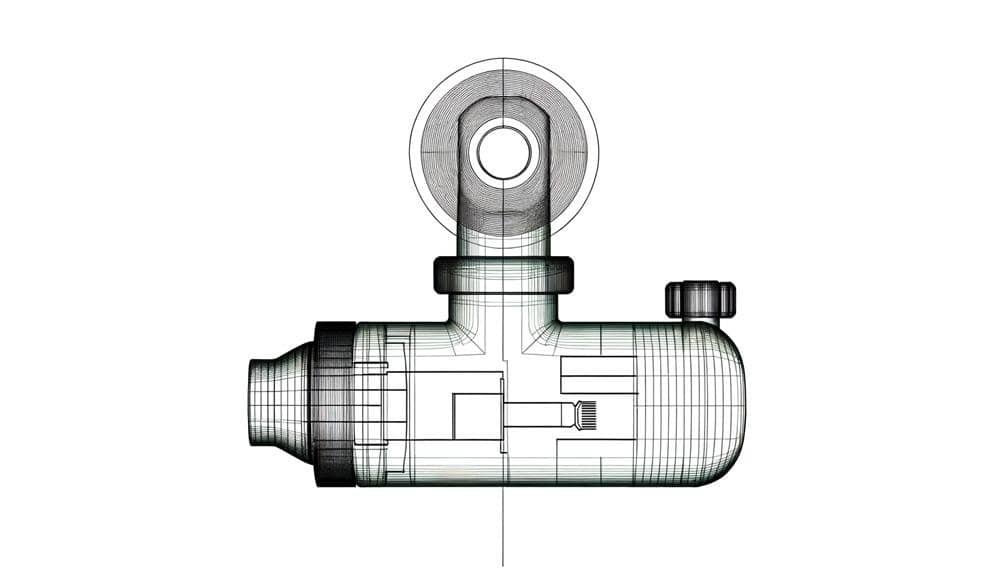What Does Compliance Measure in Terms of Lung Function?
Have you ever wondered what compliance really measures when it comes to lung function? It's a question that often lingers in the minds of those seeking a deeper understanding of respiratory health.
Compliance, in the context of the lungs, refers to their ability to expand and recoil in response to changes in pressure. It serves as a crucial parameter to assess the overall flexibility and efficiency of the respiratory system.
But what exactly does compliance measure and why is it so important? Well, let's dive into this intriguing topic and uncover the answers together.
Key Takeaways
- Lung compliance is a measure of the lung's ability to expand and contract, and it is an important parameter in evaluating lung function.
- Measurement of lung compliance can be done invasively or non-invasively, and it allows for the exchange of oxygen and carbon dioxide.
- Factors affecting lung compliance include the elasticity of lung tissues, surface tension within the alveoli, resistance of the airways, and intrinsic and extrinsic factors.
- Methods such as pulmonary function tests, spirometry, and plethysmography can be used to measure lung compliance and provide insights into respiratory system functioning.
Definition of Lung Compliance
Lung compliance refers to the measure of how easily the lungs can expand and contract in response to changes in pressure. It's an important parameter used in evaluating lung function and diagnosing various respiratory conditions.
Measurement techniques for lung compliance include invasive and non-invasive methods. Invasive techniques involve inserting a catheter into the lungs to directly measure changes in pressure and volume. Non-invasive techniques, such as spirometry and plethysmography, rely on external measurements to estimate lung compliance.
The relationship between lung compliance and lung diseases is significant. Reduced lung compliance is commonly observed in conditions like pulmonary fibrosis, asthma, and chronic obstructive pulmonary disease (COPD). It can impair the ability of the lungs to expand and contract efficiently, leading to breathing difficulties and decreased lung function.
Accurate measurement and evaluation of lung compliance are essential for diagnosing and managing respiratory disorders effectively.
Factors Affecting Lung Compliance
Factors that influence lung compliance include the elasticity of lung tissues, the surface tension within the alveoli, and the resistance of the airways. Intrinsic factors, such as the structure and properties of the lung tissues themselves, play a significant role in determining lung compliance. The elastic fibers within the lung tissues allow them to stretch and recoil, contributing to the overall compliance.
Extrinsic factors, on the other hand, refer to external forces that affect lung compliance. For example, excessive deposition of collagen fibers due to diseases like pulmonary fibrosis can reduce lung compliance. Similarly, the accumulation of fluid in the lungs, as seen in conditions like pulmonary edema, can increase surface tension within the alveoli, leading to reduced compliance. Additionally, any narrowing or obstruction in the airways can increase resistance and decrease lung compliance.
Understanding these factors is crucial in evaluating and managing lung function and respiratory health.
Importance of Lung Compliance in Respiratory Health
Understanding the impact of lung compliance on respiratory health is crucial for evaluating and managing overall lung function. Lung compliance refers to the ability of the lungs to expand and contract, allowing for the exchange of oxygen and carbon dioxide. In sports performance, lung compliance plays a vital role in optimizing athletic performance. Athletes with higher lung compliance can take in more air, increasing their oxygen supply and enhancing endurance and stamina.
Additionally, lung compliance can influence aging and disease progression. As we age, lung compliance naturally decreases, leading to reduced lung function and increased susceptibility to respiratory diseases. Diseases such as chronic obstructive pulmonary disease (COPD) and pulmonary fibrosis can further impair lung compliance, resulting in breathing difficulties and compromised respiratory health.
Therefore, understanding and maintaining optimal lung compliance is essential for overall respiratory health and well-being.
Methods to Measure Lung Compliance
To accurately measure lung compliance, various methods are employed in the field of respiratory science. These methods provide valuable insights into the functioning of the respiratory system and help diagnose and monitor respiratory diseases.
Here are three commonly used methods to measure lung compliance:
- Pulmonary function tests: These tests assess lung capacity and function by measuring parameters such as forced vital capacity (FVC), forced expiratory volume in one second (FEV1), and total lung capacity (TLC). These measurements provide an overall assessment of lung compliance.
- Spirometry: This test measures the amount and speed of air that can be inhaled and exhaled. It helps evaluate lung function and detect abnormalities in lung compliance.
- Plethysmography: This method measures changes in lung volume during breathing. It provides information about lung elasticity and compliance, allowing for a more detailed assessment of respiratory function.
Clinical Significance of Abnormal Lung Compliance
Abnormal lung compliance, as observed through the methods mentioned previously, holds significant clinical implications in the assessment and management of respiratory disorders.
Lung compliance refers to the measure of the lung's ability to stretch and expand in response to changes in pressure. When lung compliance is abnormal, it can indicate underlying lung pathologies such as fibrosis, pulmonary edema, or lung infections.
The clinical implications of abnormal lung compliance are twofold. Firstly, it helps clinicians in diagnosing and monitoring the progression of respiratory disorders. Secondly, abnormal lung compliance influences treatment options.
For example, in conditions where lung compliance is reduced, such as in fibrosis, treatment strategies may focus on managing symptoms and preventing further lung damage. Conversely, in conditions where lung compliance is increased, such as in obstructive lung diseases, treatment may involve bronchodilators to improve lung function.
Conclusion
So, now you know that lung compliance is a crucial measure of lung function, which refers to the ease with which the lungs can expand and contract. It's influenced by various factors such as age, disease, and lung elasticity.
Measuring lung compliance helps diagnose and monitor respiratory conditions like asthma, chronic obstructive pulmonary disease (COPD), and pulmonary fibrosis. Using techniques like spirometry and plethysmography, healthcare professionals can assess lung compliance accurately, aiding in the management of respiratory health.
Remember, maintaining optimal lung compliance is vital for overall respiratory well-being.







